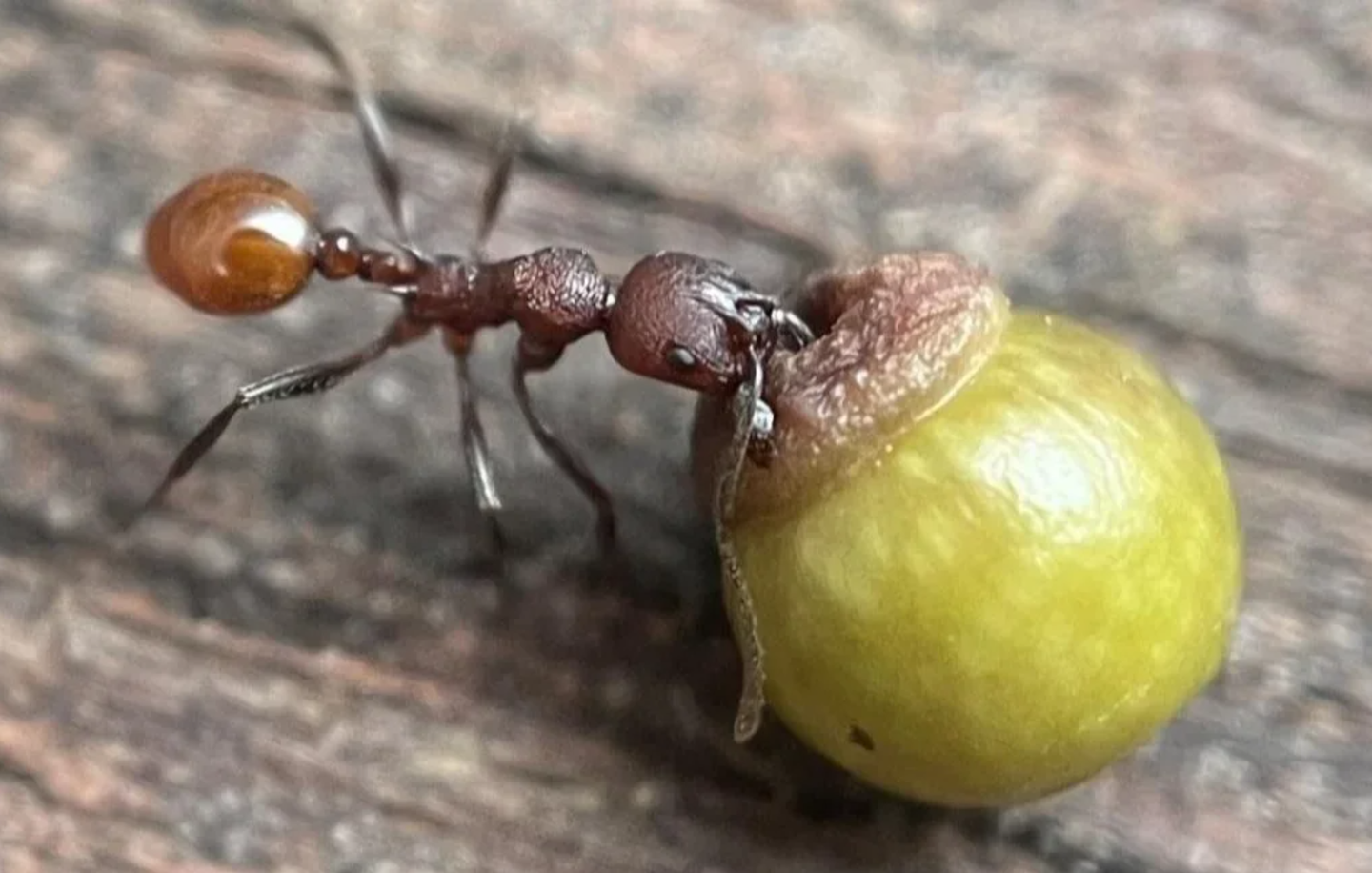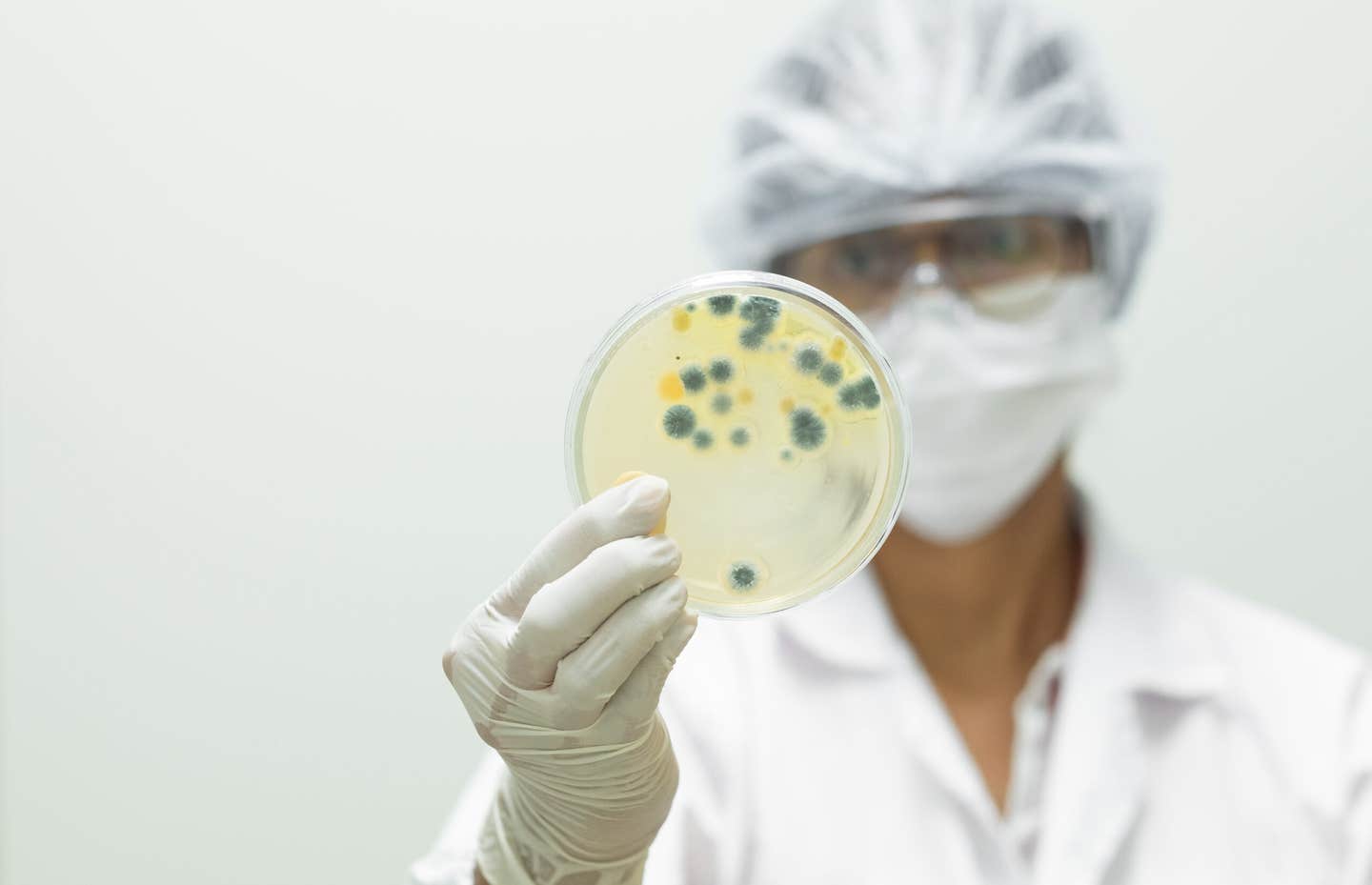Groundbreaking discovery rewrites over a century of insect and plant science
Ants carry oak galls back to their nests, uncovering a surprisingly intricate connection among ants, oak trees, and gall wasps

Eight-year-old Hugo Dean was watching ants near his home when he saw them hauling what looked like seeds. (CREDIT: Andrew Deans, Penn State)
For more than a hundred years, scientists have studied the strange partnership between ants and seeds. In this relationship, known as myrmecochory, ants are drawn to seeds that offer fatty, nutrient-packed lures called elaiosomes. The insects carry these seeds back to their nests, snack on the rewards, then discard the rest, leaving the seed undamaged and safe underground.
These underground deposits protect seeds from predators and harsh weather, helping them grow in better spots. But this tidy story recently took an unexpected turn. A new discovery revealed that something other than seeds was getting the ants' attention—and it all started with a child’s sharp eye.
Eight-year-old Hugo Dean was watching ants near his home when he saw them hauling what looked like seeds. He mentioned it to his dad, Andrew Deans, who teaches entomology at Penn State. On closer look, Deans realized the ants weren't collecting seeds at all. They were picking up oak galls—strange, tumor-like growths caused by tiny wasps.
Galls form when certain wasps, including species like Kokkocynips decidua and Kokkocynips rileyi, lay their eggs in oak tissues. These growths become shelters where wasp larvae develop. Hugo’s discovery kicked off a research project that reshaped what scientists knew about the link between ants and plants.
The galls collected by ants had a curious feature: a small fatty structure researchers later named the “kapéllo,” from the Greek word for “cap.” Much like elaiosomes on seeds, these kapéllos are packed with fatty acids that tempt ants. The insects carry the galls back to their nests, just as they would seeds.
Once there, the ants eat the kapéllo and ignore the rest. The gall, still whole, becomes a hidden home for the developing wasp larva inside. This discovery suggests ants are unknowingly helping wasps too—expanding the web of connections between insects, plants, and the world they share.
Related Stories
This interaction appears to mirror traditional myrmecochory, but with a new layer of complexity. Whereas elaiosomes are an adaptation of plants to attract ants, kapéllos are an extension of the wasps’ manipulation of oak trees, effectively co-opting ant behavior to benefit their larvae.
The interplay between ants, wasps, and oaks suggests a unique evolutionary convergence, where distinct organisms independently develop similar strategies to exploit ant behavior.
Field observations and laboratory experiments confirmed the ants’ preference for galls with intact kapéllos. Researchers conducted experiments in Western New York and central Pennsylvania, observing ants transporting galls to their nests.
In controlled lab settings, ants showed significantly more interest in galls with kapéllos compared to those without. The chemical composition of kapéllos revealed high concentrations of fatty acids, mimicking the profile of dead insects—a primary food source for scavenging ants.
“The fatty acids in gall caps and elaiosomes seem to mimic dead insects,” explained John Tooker, professor of entomology at Penn State. “Ants are scavengers, so it’s no accident that these structures resemble their usual food.” This mimicry underscores the sophistication of these evolutionary strategies, blurring the lines between plant and insect adaptations.
The team also investigated whether ants showed equal interest in kapéllos and traditional elaiosomes by setting up bait stations with both oak galls and bloodroot seeds, a plant known for its myrmecochorous seeds. The results showed no significant difference in ant preference, further highlighting the functional similarity between these structures.
The study’s implications extend beyond academic interest. Oak trees, which host these interactions, face threats from habitat loss, climate change, and disease. “The loss of oak trees could disrupt the intricate relationships between ants, wasps, and galls,” said Andrew Deans. “It’s a stark reminder of how interconnected ecosystems are and the importance of preserving biodiversity.”
This research raises profound questions about the evolution of these interactions. Did gall-inducing wasps initially manipulate oaks, only later exploiting ants? Or did ant behavior drive the evolution of kapéllos?
Fossil evidence suggests gall wasps have been inducing galls for millions of years, long before their interactions with ants were recognized. “It’s likely that wasps began manipulating ants after refining their ability to induce galls,” Deans noted, emphasizing the dynamic nature of evolutionary processes.
The discovery also highlights the role of chance in scientific breakthroughs. Hugo’s initial observation may have seemed trivial, but it catalyzed a significant leap in understanding. Reflecting on his contribution, Hugo remarked, “I thought they were seeds at first.
I was excited to learn they were galls and even more surprised that ants collected them.” While he doesn’t see himself following in his father’s footsteps, his curiosity has already left a mark on the scientific community.
Looking ahead, researchers aim to explore other potential examples of multi-layered interactions in nature. “We’ve been studying plant-insect relationships for over a century, but discoveries like this show how much we still don’t know,” Deans observed.
These findings underscore the complexity of ecological networks and the need for continued exploration to uncover the hidden connections that sustain biodiversity.
Note: Materials provided above by The Brighter Side of News. Content may be edited for style and length.
Like these kind of feel good stories? Get The Brighter Side of News' newsletter.



